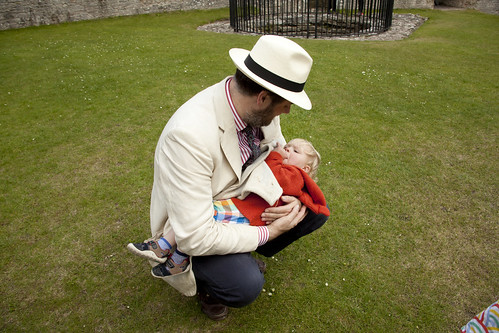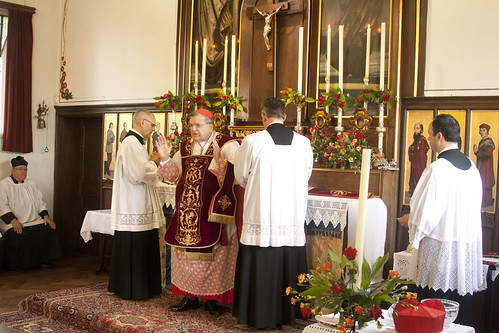In the current phase of the Church's crisis, we are focusing as much or more on the enablers of abuse, than on the abusers themselves. It is time we thought about them, because it removes the comforting impression that a 'few bad apples' could be ejected from the priesthood and all would be well. As is sometimes pointed out, perhaps 4% of priests were sex abusers. The problem is the general ethos and culture which enabled them to carry on their abuse, and the superiors systematically protected the abusers. Never mind the 4% of priests: it is the 60% or 80% or more of bishops and religious superiors who harboured sexual predators and provided them with fresh opportunities for abuse. It may be that most of the priest-abusers have died or been laicised by now, but their hierarchical enablers, few of whom had to face up to their crimes when the clerical abuse became a big story in 2002, have continued to flourish. This is an indication that, even if stricter reporting procedures have had a restraining effect on sexual predation by priests since 2002, the ethos and culture which made the abuse possible is still largely intact.
What is this culture? I have on this blog tried to go beyond a superficial understanding of it with the help of two perspectives: first, the
classic account of how conformism can distort an individual's behaviour, and how it can take over an organisation; and second, the way that the rejection of the Church's teaching on sexuality has destroyed the
hierarchy's ability to respond appropriately to cases of abuse. In this post I want to consider things from a third perspective, which is connected with conformism: the pattern of abuse-enabling.
Eleven months ago I was defending the 'Filial Correction', and
wrote this about some of its critics:
We should fear any such attitude, however well-intentioned, invading the Church. If there are problems, we should talk about them, and not pretend they do not exist.
It is natural to ask whether, since Cardinal McCarrick was himself a sexual predator, those who defend him, and often had such long associations with him, are or have been sexual predators as well. It is after all very possible. But even if some are, I expect most are not. They stand in relation to McCarrick as many family members stand in relation to an abusive parent. They desperately try to protect him, not because they approve of what he does, but because they are terrified of the consequences of it all coming out. They are frightened that the exposure of the abuser will destroy the family.
That specific fear is not, of course, entirely irrational, but the behaviour of these family members is not to be understood in simple, rational terms. They are, after all, victims of the abuse, whether sexual or psychological, and this has shaped their behaviour in non-rational ways. To put it in crude terms, they have for years and perhaps decades been bullied and brainwashed by the abuser, and the complex and self-contradictory message the abuser has sought to impress upon them includes the following: the abuser does no wrong; they are at fault for bad things which are happening; they are guilty and should fear the attention of outsiders; the abuser loves them and protects them; and terrible things would happen if he were removed from the scene.
Those who have internalised this message can go to
astonishing lengths to protect the person who is making their lives hell, and to maintain the situation in which his behaviour can continue.
An added factor, particularly when we move from families to larger institutions, is when the abuser is able to promote favoured victims to the status of co-abuser, or give them other privileges which depend upon the continuing existence of the abusive system.
It is worth emphasising that I am talking about
abuse, not what the secular press likes to call 'consensual relationships with adults'. Abuse does not stop being abuse when the victim turns 18, but the pattern of behaviour I am describing has little in common with, say, a seminarian having an affair with a fellow seminarian, or a woman outside the seminary, serious as that would be. Nor am I principally concerned with sexual orientation: the pattern of behaviour can equally be displayed when the underlying abuse is not sexual at all, but psychological. My interest here is the relationship between what we might call the core abuse and the penumbra of unhealthy attitudes and patterns of behaviour which come to be displayed by those around the abuser, even by people who don't take part in the core abuse.
For these attitudes and patterns of behaviour in the circle around the abuser are
themselves abusive.
Imagine a family or institution at whose apex there is a classic abuser. He has surrounded himself with people who permit, facilitate, and cover up the abuse, and placed them in positions of privilege. Beyond this inner circle there will be people who have not been completely conditioned by the abuse, for example because they are newer on the scene, or younger. Most of them will have much more contact with the inner circle than with the abuser himself. It is the inner circle who will do much, or perhaps even all, of the direct work of bullying and brainwashing these outer-circle people, who will be looking to them for guidance. Consistently turning a blind eye to abuse, refusing to talk about it, becoming angry when certain topics are broached: these are powerful tools, if applied consistently to a captive audience over a long period of time. They train the junior members of the institution or family in the behaviour which is expected of them. This is a training in patterns of thought and behaviour which are unhealthy: which are harmful to mental health. They are gaslighting them.
This will work most profoundly in a closed institution like a cult, but it can work in families, seminaries, dioceses, the whole Church, and indeed in a whole society. The more open the institution the harder it will be for a culture of abuse to distort members' sense of justice and of what is normal, but it can still work to a large extent. This is how totalitarian states can continue to exist.
The most important thing for abuse-facilitators to do is to keep a lid on the exchange of information and dissent. This is a very pronounced principle in
many cults, and of course in repressive states. In institutions and families which have limited coercive measures to employ against members, social pressure is the key to this. People who speak out internally or seek to attract the attention of outsiders are subjected to vilification and ostracism. Abusive institutions are generally also on the look-out for scapegoats to blame for their poor functioning, so hysterical attacks on whistleblowers can serve a double purpose.
The people attacking the whistleblowers are, to repeat, not necessarily the top-level abusers in the institution. They are people who are both abused and abuser: who are inflicting on others what they fear will happen to themselves. At the limit, we might want to absolve them from blame altogether: they may be too terrified and pyschologically damaged to think straight. But my concern is not with Maoist China; I'm talking about something at the milder end of the range. The Church is a dysfunctional family, not a death-cult. The unbalanced attacks on Archbishop Viganò, the desperate attempts to change the subject, are not being carried out by brain-washed zombies. They are being carried out by people who have got into a habit of protecting the institution regardless of the rights and wrongs of it.
Talking of tiers of abuse may seem a rather extreme approach to analysing a simple problem of over-zealous loyalty to the Church, but remember, we now know that we are dealing with the institutional manifestation of widespread sexual abuse. The question I am probing is: given that we have had an endemic abusive system at the heart of the institution for fifty or more years, at the level of the episcopacy, the seminaries, and even the Roman curia, what effect on the overall culture of the Church has it had?
The answer is that it will have done its best to draw into its distorted mind-set as many people involved with the Church as possible. It will have done its best to inculcate in them the abusive assumptions that the system is not, really, bad; the victims are guilty; and it would be terrible if the system is exposed: whistleblowers are traitors. We know how ruthlessly men too strong, too healthy, to bow to this set of attitudes have too often been treated. We know the kind of weak and weaselly individual who too often has found preferment in this system. Thank heaven, there are exceptions. I am not making a generalisation about bishops or priests, so much as an observation of the
direction in which things have been pushed, a direction we would not have gone in at all had it not been for the poison of abuse eating away at the good sense of good people in the Church over many decades.
This problem will not quickly be cured. Removing the chief abusers and their chief enablers is obviously urgently necessary. Making it clear to the next rank down, to people who have consciously or half-consciously been aiding abuse and its cover-up, that this is unjust and continues and spreads deeply damaging attitudes and behaviours - that it is itself
abusive - is the next step.
Support the work of the LMS by becoming an '
Anniversary Supporter'.
 Happy Michaelmas to my readers!
Happy Michaelmas to my readers!






